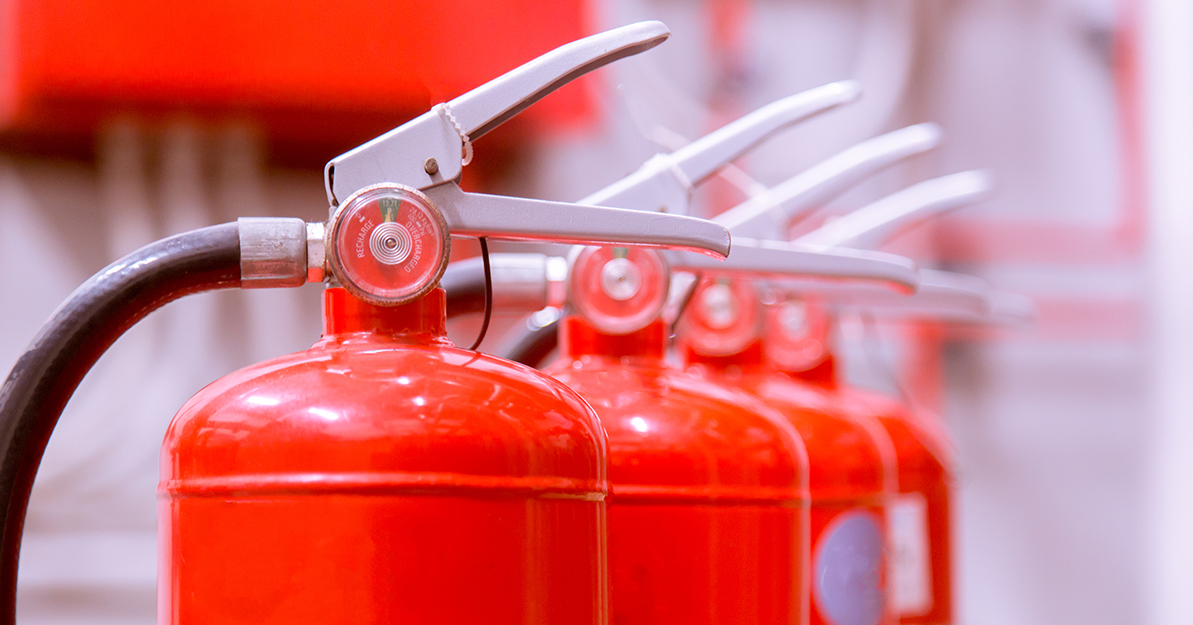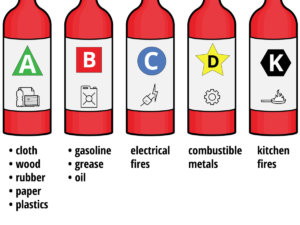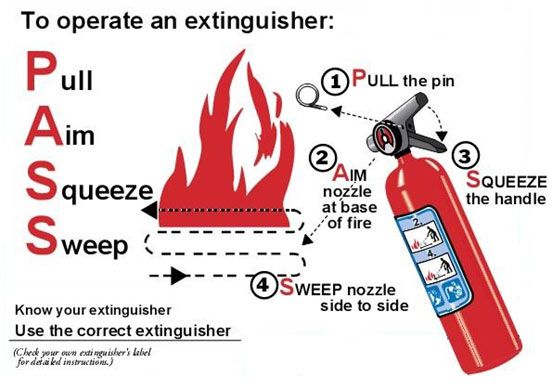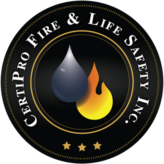If a fire broke out near you right now, would you know what to do?
Although putting out a fire may seem intuitive, things don’t always go as planned. Fires can start any time, and knowing what to do in the early stages could save your home, your life, and your family.
In a situation where a small fire grows out of control, you may have only seconds to use a fire extinguisher properly. Being proactive about your fire safety is necessary, as a crisis is not the time to be figuring out how to put out a fire.
In a situation where a small fire grows out of control, you may only have seconds to use a fire extinguisher properly.
If you know how to properly use a fire extinguisher before a fire breaks out, you’ll be less likely panic and be more in control of your actions.
Science tells us that people behave in high stress incidents in certain ways. What you do will be dependent in large part on what your stress level is. According to the CDC, that’s why preparation and practice are so important.
When you see a fire in it’s early stages, your brain will most likely move through three stages:
- Denial
- Deliberation
- Decisive action
Knowing these stages , and doing some preparation ahead of time will lessen your stress levels and help you deal with the fire more effectively.
Follow these steps to tackle a fire in its early stages.
Step 1: Call 911
As soon as you notice a fire, your should first sound the fire alarm or call the fire department — or at least tell someone near you do so. Fires can get out of control very quickly, so even if you think the fire can be easily put out with an extinguisher, it’s best to have reinforcements on the way. Give the operator your name and location, and immediately move to step 2.
Step 2: Assess the Situation
Here is your assessment check list:
- Make sure the fire is small. The flames should never be taller than you and should not cover an area that is bigger than 60 square feet. 60 square feet is about the size of a king size bed (42.15 square feet), so don’t try to tackle a fire that is much bigger than that.
- Make sure that the fire isn’t obstructed and that you can reach it from a normal standing position. In other words, don’t try to put out a fire that’s coming from a hole in the wall or from the ceiling.
- Observe the smoke. Do not attempt to put out the fire if the room is filled with smoke. Smoke inhalation can cause you to pass out before you finish the job. In addition, poor visibility might mean that you can’t see well enough to properly fight the flames.
- Check the radiant heat. If the fire is too hot for you to get within 10-15 feet, evacuate immediately.
Step 3: Determine a Safe Evacuation Route
If the fire is still small, unobstructed, and the it is not too hot yet, it is crucial that you check your exits. Do not allow the fire to come between you and your exit. Before you reach for the fire extinguisher, think of yourself first. Make sure you have a clear escape route that is free of flames, smoke, and excessive heat.
Step 4: Check Your Extinguisher Functionality
- Read the gauge for pressure. All extinguishers have a gauge to display the pressure. If the pressure is low or if the fire extinguisher has been used — even partially — it needs to be recharged or replaced. Please do not try to use it, as it will not work.
- Make sure you have the right kind of fire extinguisher. The wrong extinguisher could make a fire worse. That’s why it’s important you make sure you are using the right extinguisher for the right class of fire.There are five classes of fire extinguishers. Make sure you are using the right class on the right type of fire.
-
- Marked with “A”: These types of fire extinguishers should be used on fires involving paper, wood, cloth, trash, rubber and plastic.
- Marked with “B”: These types of fire extinguishers should be used on fires involving flammable liquids, such as oil, grease, gasoline, paint, tar, etc.
- Marked with “C”: These types of fire extinguishers should be used on electrical fires, e.g. those that involve wiring, fuse boxes, circuit breakers, machinery or appliances.
- Marked with “D”: These types of fire extinguishers should be used on fires that involve combustible metals, such as magnesium, titanium, zirconium, sodium, and potassium.
- Marked with “K”: These types of fire extinguishers should be used on combustible cooking fires, such as kitchen fires that involve large amounts of heated grease.
Although this may seem overwhelming, the good news is that many homes and businesses have multi-purpose fire extinguishers that are good for 3 types of fire (A, B and C).
Note: If there is a slash through any of the letters, it means that the extinguisher should definitely not be used on that class of fire.
Step 5: Extinguish using the P.A.S.S. Method
Make sure you’re 8-12 feet from the fire, keep your back to your exit, and attack the fire with your extinguisher using the P.A.S.S. technique:
- P)ULL the pin on the handle of the extinguisher, unlocking it so that it can be discharged. Most pins have a ring on it so you can find it easily. Some have zip ties so the fire department knows if an extinguisher has been used, but don’t worry, these zip ties are designed to be broken easily.
- A)IM low when you point the extinguisher nozzle, so that you are attacking the base of the fire. Don’t hose the flames.
- S)QUEEZE the handle to release the extinguishing agent with one hand and aim the hose with your other hand. Apply slow and even pressure.
- S)WEEP the nozzle from side to side at the base of the flames until the fire is extinguished. Don’t leave glowing embers because these can easily reignite.
Be careful to back away quickly if the fire flares up while you use the extinguisher.If the fire does not extinguish immediately, or continues to grow beyond what can be safely handled, or if the extinguisher empties before the fire goes out, evacuate immediately.

Fire Extinguisher Charge Indicators
Check the charge level of your fire extinguishers regularly. Replace them immediately if they are not fully charged.
Fire Extinguisher Charge Indicators
To check this style of extinguisher, depress the green button. If it is fully charged, the green button should pop back out immediately.


